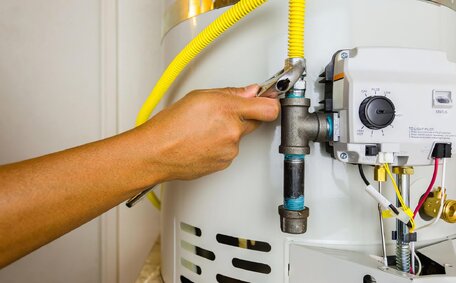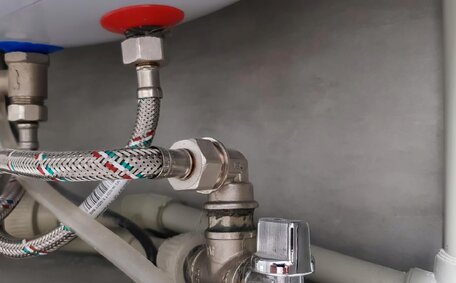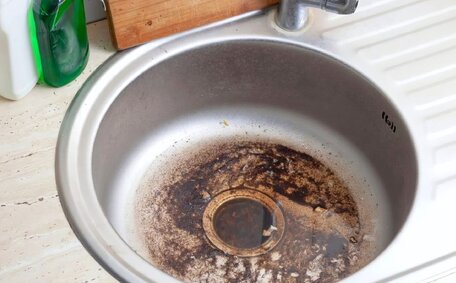Introduction to Common Water Heater Problems
Don’t let common water heater issues leave you in the cold. This guide will help you pinpoint and resolve common problems, even with instant gas water heaters. Our expertise as Castle Hill plumbers includes tackling dilemmas in gas electric and tankless water heating systems for local residents. Watch out for signs your unit needs attention, like no hot water, odd noises, leaks, or fluctuating water temperatures.
This article offers insights on how fix and evaluate your hot water system for numerous typical issues on your own. We’ll go through how to adjust thermostat settings, relight pilot lights, replace parts such as heating elements, and enhance your hot water unit’s performance by removing sediment buildup.
With over 15 years of experience, your local plumbing experts are familiar with all major brands found in the Castle Hill area, which typically last 8-15 years before needing service.
We aim to empower you with the know-how to restore your hot water service swiftly. However, if you’re faced with no hot water and a major repair or replacement, call our office at 1300 349 338 to schedule a same-day consultation with our licensed technicians.
Troubleshooting Gas Water Heaters
Firstly, ensure the gas supply valve is open and there are no gas leaks when addressing a hot water heater’s lack of hot water.
Inspect the pilot light assembly with care, calling gas professionals if needed, as guided by the appliance lighting instructions. The water heater your home depends on is a critical component, reliably supplying warm water as you need it.
Ensure the pilot flame fully engulfs the thermocouple and thermopile sensors, as low water pressure can lead to malfunction and prevent the gas valve from opening. Consult the owner’s manual to accurately locate components such as the pressure relief valve if their position isn’t immediately obvious. Replace the thermocouple if the pilot light won’t stay lit, as this is a frequently encountered failure.
Watch the water pressure gauge on the heater during operation. Do not leave a malfunctioning gas appliance running; always check for hazards. For more gas water heater working troubleshooting tips, call your Castle Hill Plumbing team on 1300 349 338.
Should you detect no change in the water temperature after 30 minutes, turn off the unit and enlist a technician’s help; the main burner may require servicing.
Checking the Pilot Light
A critical troubleshooting step for gas water heaters is to verify adequate water flow, seeking professional help if a water problem arises. The pilot light ignites the main burner to heat water. It can go out if there are drafts or an issue with the thermocouple.
Follow the most common manufacturer’s guidelines to relight the pilot. First, turn off power water to the gas supply. Then eradicate any debris around the pilot light tube, and check gas is flowing correctly before you attempt to ignite it. Press and hold the pilot button while triggering the sparker.
Keep it held for 60 seconds before releasing, allowing the thermocouple to heat up, then gauge the signal strength to the gas valve.
If the pilot isn’t working by staying lit after releasing, replace the thermocouple. Take care working around gas appliances and call a professional if needed. Continually attempting to relight an unstable pilot light is dangerous.
Testing the Thermocouple
A critical part of troubleshooting when there’s no hot flow is examining the gas water heater’s thermocouple. If the thermocouple malfunctions, it will shut off the gas supply as a precaution.
Regularly test the thermocouple to assure effective hot water delivery, turning off the gas and pilot light before testing. Touch the red and white wires to the end of a multimeter set the resistance function.
Disconnect the thermocouple from the gas control using pliers. A good thermocouple should reveal if your hot water working with continuity, often at about 13 ohms resistance. No continuity means it needs replacing.
Be cautious when testing thermocouples and seek professional help if gas control valves are at risk of damage from short circuits. Call a professional if unsure. However a simple thermocouple replacement is an affordable DIY task that can get your hot water flowing again.
Replacing the Gas Valve
Check manufacturer guidelines for hot water heaters before commencing any repair steps. Turn off the gas and power supplies.
Disconnect the pilot tube, thermocouple, and gas supply line from the defective valve using wrenches. If troubleshooting steps haven’t restored hot water, the gas valve may need replacing.
Match the old valve against the new one to confirm compatibility before installation. Once hand tight, finish tightening with a wrench. Check for leaks by spraying with soapy water and watch for bubbles.
Apply thread sealant to the threads before reassembling each component by hand first to avoid cross threading.
If any issues arise with your gas hot water system, there could be a risk of a dangerous gas leak. Call our office immediately at 1300 349 338 for assistance. Replacing a gas valve requires care to avoid leaks, so don’t hesitate to consult a professional Castle Hill plumber for assistance.
Troubleshooting Electric Water Heaters
When your electric hot water heater isn’t working properly, there are several key components to inspect. First, check the power supply and switch off house circuit breakers. Then verify the water heater circuit is in working condition. The electric hot water system relies on heating elements, like the upper heating element, that are immersed within the water heater tank to warm the water.
Test the upper thermostat and lower heating element for continuity with the multimeter set to ohms.
Verify that resistance readings are between 10 to 16 ohms. Make sure wiring connections are tight.
Inspect the lower heating system thermostats, including the hitemperature limit switch, closely. Adjusting thermostat settings higher may also restore hot water.
Should you not see your heater working, or if your heating unit remains unresponsive, our Castle Hill plumbers are available to restore power water functionality at 1300 349 338 for a prompt appointment.
Testing the Heating Elements
Check the electric water heater’s heating elements by measuring their resistance with a multimeter. Turn off power to the heater and proceed to empty the tank by starting with the power supply unit. Remove the upper and lower access panels to locate the elements.
Set the multimeter to the ohms setting and apply the probes to the element terminals. An open circuit could indicate a tripped internal limit or buildup on the elements preventing heating.
No continuity signals that the part may need replaced.
Also, confirm that the wiring connections for the upper element heating system are tight and secure. If all checks out but you still lack hot water, the thermostats may be defective.
Loose connections can impact heating performance. Replace any corroded wires.
Resetting the Temperature Controls
One of the easiest fixes you’ll need for an electric water heater not heating properly is resetting the temperature controls including the high-temperature limit switch.
Then press the reset button on the lower control panel if the water is too hot or equipped with the feature.
Check your water heater label or manual for proper thermostat and safety switch settings based on tank size and type. Sometimes thermostats and limits get tripped, cutting power supply even though heating elements may still be working. Resetting often restores hot water but if not, further testing is required.
Checking Power and Electrical Connections
Verify that power is reaching the electric water heater, an essential troubleshooting step. Make sure the house circuit breaker for the water heater is set to the "On" position. Additionally, Ensure any disconnect switches near the unit are activated.
Ensure your home’s circuit breakers for the water heater and the fuse box are functioning properly.
Inspect the power supply wiring, which can cause issues, wiring harnesses and connections leading to the water heater for any damage.
Secure any loosened wire nuts or terminal screws. Proper electrical connections are vital for the heating elements to operate.
Should your circuit breaker for the electric water heater trip repeatedly, preventing hot water, this may indicate a short circuit or electrical overload. Consult a licenced electrician immediately in such scenarios to prevent safety hazards. Our team at Castle Hill Plumbing are also happy to help diagnose any underlying electrical problems affecting hot water systems.
When to Call a Professional Plumber
There are a few instances where it’s best to call a professional Castle Hill plumber for assistance rather than attempting to repair the water heater yourself:
- Suspected gas leaks - If you smell gas or the gas pilot light repeatedly goes out, immediately shut off the gas supply and call our office on 1300 349 338 to prevent safety hazards.
- Complex electrical issues - Faulty wiring, shorts or repeated tripping of the circuit breaker indicates a serious problem requiring a licenced electrician’s expertise.
- No hot water after troubleshooting - If you’ve followed the guidance but there’s still no hot water your unit is producing, professional evaluation is indispensable to figure out the cause accurately.
- Tank replacement needed - If your hot water heater is over 8-15 years old, a new unit likely makes more sense than investing in repairs.
- Lack expertise - Diagnosing water heaters takes technical skill and experience. Don’t hesitate contacting professionals trained in all major brands.
Castle Hill Plumbing’s qualified technicians can quickly troubleshoot your water service issues and make professional recommendations. Call our 24/7 plumbing team at 1300 349 338 for assistance restoring your hot water.
Preventative Maintenance for Water Heaters
Performing regular maintenance is essential for maximising the lifespan of gas and electric hot water systems. We suggest learning more about your gas hot water units by inspecting them annually for early wear signs, corrosion, or leaks. Catching minor issues early on can prevent more expensive repairs down the road.
Flushing your heater’s water tank also combats the detrimental effects hard water can have, clearing sediment that encumbers heating efficiency. Gas water heaters may also need the pilot light and burner assembly cleaned. Consult your heater’s manual for model-specific draining and flushing instructions.
Replacing the anode rod every 3-5 years helps safeguard the storage tank interior, especially in hard water localities. Our Castle Hill plumbers can help with any maintenance or know when upgrades will prove more cost-effective for ageing water heaters.
Flushing the Tank
Periodically flushing the heater tank of your model aids in removing built-up sediment and ensuring your water maintains a high-quality warmth. For hard water areas, we advise an annual flush of your water heater. Commence by switching off water to your electric heater or the gas supply for a gas model.
Connect a garden hose to the tank drain valve and lead the flow to a safe drainage area. Open the drain valve and let water flush out until it runs clear. This removes silt and mineral deposits that can accumulate at the bottom of the tank.
Take care as sediment-laden water may be hot.
Once the water is clear, close the drain valve, refill the tank, and reinstate power or gas.
Flush a gas water heater’s burner assembly too by disconnecting the pilot tube and blowing air through while covering the pilot opening.
Replacing the Anode Rod
The anode rod is a crucial component that protects the interior tank from corrosion. Over time, the anode rod corrodes instead of the tank liner, helping extend the water heater’s lifespan. We recommend replacing the rod every 3-5 years.
Inspect the anode rod by turning off the power or gas and draining a portion of the tank’s water. Remove the inspection bolt at the top and use a non-conductive rod to poke the anode. If more than 6 inches is corroded, replacement is needed.
For the replacement rod, apply thread sealant to the threads and tighten by hand, finishing with a socket wrench. Refill the tank before restoring power/gas supply. Take care not to damage the tank interior when removing the old rod.
Replacing an anode rod only takes about an hour. In that event, our Castle Hill plumbers can discuss replacement options. Call 1300 349 338 anytime your water heater needs attention.
However, attempting to muscle off a highly corroded rod risks cracking the tank.






